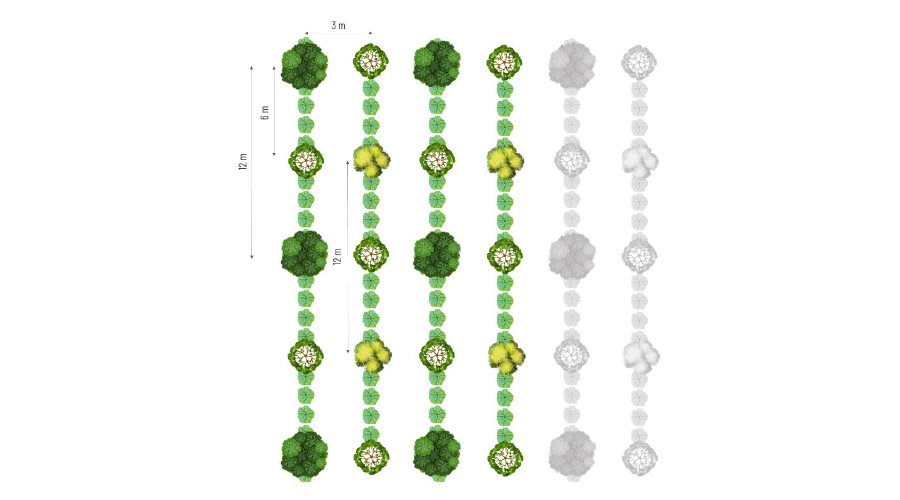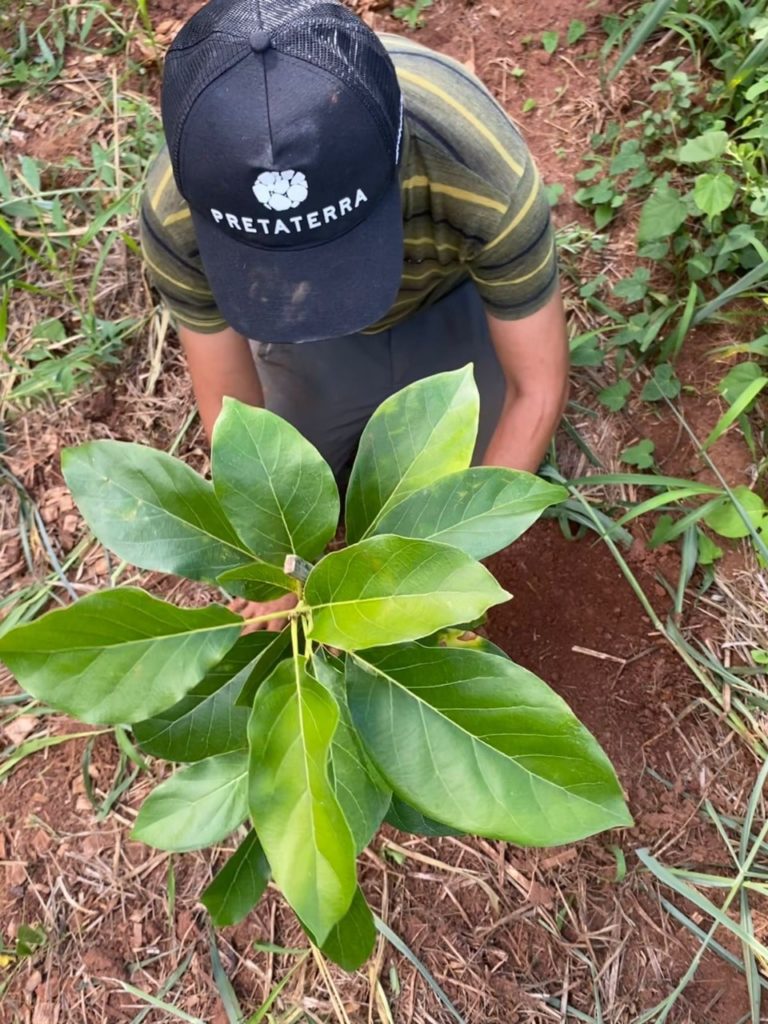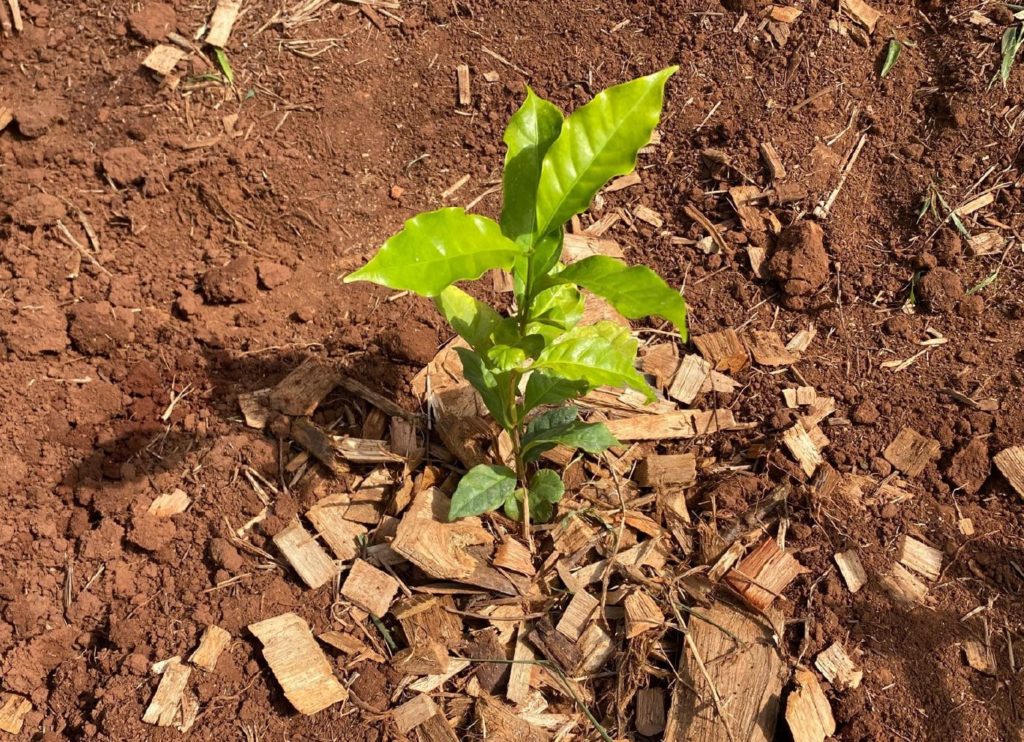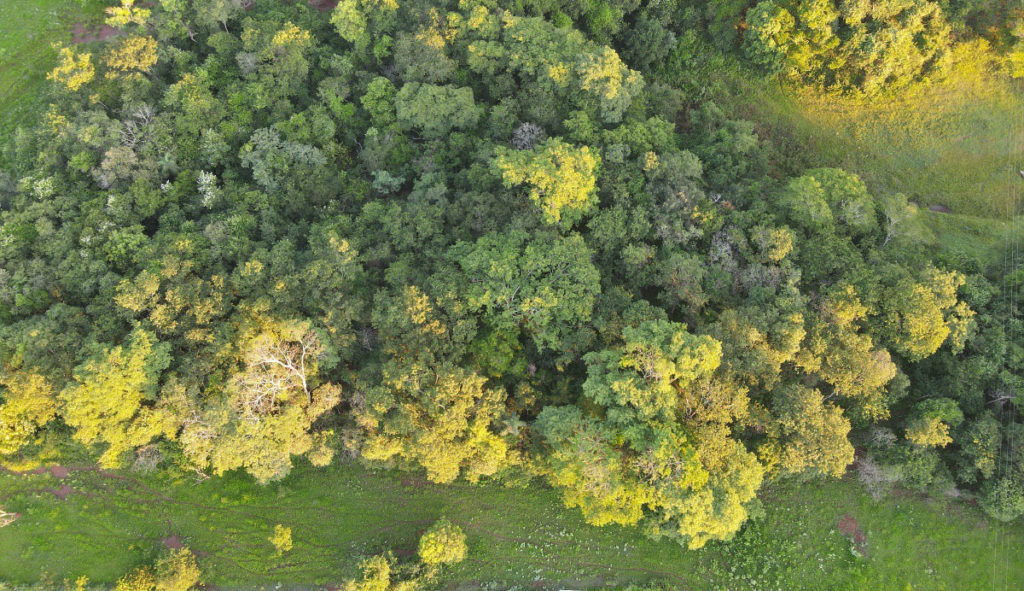In this second post in this series (see the first one here), in which we explain the agroforestry systems we are planting in the Timburi Project, let's talk about SAF coffee!
Within the Timburi Project we are working a lot with coffee. The region has aptitude for this culture and the municipality has a roasting plant, the city hall visits the farmers after the harvest to peel the coffee, some farmers already do the artisanal roasting on their properties and sell the coffee at a special price. Because coffee cultivation is so important in the region, we are working with two systems: an agroforestry system with coffee planted from scratch and a system for converting coffee from monoculture to agroforestry. In this post we will talk about the system for conversion.
How does the planting of an agroforestry system work in an area where there is already a monoculture?
Especially in the case of perennial monoculture crops, such as coffee, the first thing we need to understand is the spacing of plants in the area. This is because the objective is to remove as few individuals as possible. Still, it is necessary to understand the type of operations already carried out by the farmer; for example, if the harvest is mechanized, it will not be possible to include trees between the coffee lines. Everything will vary greatly from the practices already established by the farmer. At PRETATERRA, this phase of acquiring traditional knowledge is very important (you can read more about it on here). (Another unpublished text for PRT blog).
In planning this SAF for coffee conversion, we systematized the practices adopted by farmers in the region and the result was that most, if not all, plant the coffee lines 3 meters apart and use machinery between the lines for mowing or harvest. In this way, the trees were inserted every 6 meters in the lines of the coffee already planted.
What is the logic of the system?
Every 6 meters on the coffee lines we made the skeleton of two feet to plant a tree. We plant high-value, long-cycle timber trees interspersed with service species in alternating rows with medium-cycle timber trees and service species. The objective is the diversification of coffee monoculture with tree species of varied life cycles, which will partially shade the coffee and offer several ecosystem services, such as carbon sequestration, microclimate creation, greater penetration of water into the soil, etc. The biomass of the service species will serve to cover the coffee trees and cycle nutrients and the wood species will be a source of extra income for the producer, in the medium and long term.



